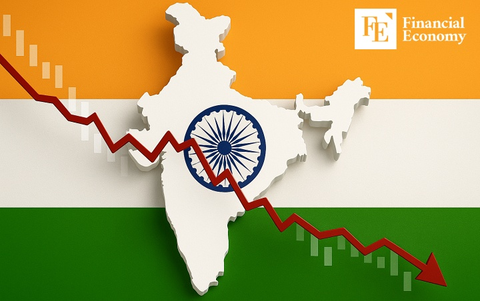Trumpnomics Takes Aim at the Strong Dollar—A Test for U.S. Currency Dominance
Input
Modified
Pursuing a strategy of high tariffs with a weak-dollar policy 100-year zero-coupon U.S. bonds sparks intense debate "Trumpnomics" undermine the global dominance of the U.S. dollar

Following President Trump’s announcement of “reciprocal tariffs”, attention has surged around the Miran Report, authored by Stephen Miran, Chair of the White House Council of Economic Advisers. The report—first released in November and amplified through recent speeches and interviews—forms the economic backbone of Trumpnomics, which centers on high tariffs, a weaker dollar, and an aggressive strategy to cut the trade deficit and national debt. However, economists warn that this strategy combines incompatible policies and could destabilize the global market
Trade Deals, Deregulation, and Tax Cuts: The Three Pillars of Trumpnomics
Stephen Miran, President Trump’s top economic adviser, has returned to the spotlight amid escalating tariff tensions triggered by Trump’s announcement of reciprocal tariffs on April 2. In his interviews and a keynote at the Hudson Institute, Miran outlined the three pillars of Trump’s economic policy: trade negotiations, regulatory rollbacks, tax reform, and cuts. Miran claimed that tariff revenue could replace tax revenue and fund further tax cuts. He projected that the effective average tariff rate would rise by 13 percentage points, yielding hundreds of billions in new revenue without destabilizing the economy. This revenue, he argued, could be used to pay down interest on the $1.1 trillion U.S. debt (2024 fiscal year) and expand fiscal stimulus, positioning the policy as a form of self-funding economic nationalism.
Trump’s team also targets a weaker dollar, arguing that a strong dollar exacerbates the trade deficit by hurting U.S. exports. Miran promotes a policy mix where a weaker dollar fuels exports, while tariffs suppress imports.
Yet this combination is widely seen as economically contradictory: tariffs drive up import prices, risking inflation, while a weaker dollar dilutes the import-suppressing power of tariffs. Similarly, inflation typically pressures the Federal Reserve to raise interest rates Miran, however, insists the U.S. can maintain low interest rates and inflation under his plan—a claim economists like former Treasury Secretary Larry Summers dismiss as “stagflationary” and self-inflicted.
Maintaining low interest rates and low inflation amidst a weak dollar and high tariffs
Some media outlets report that the Miran Report proposes issuing 100-year, zero-interest U.S. Treasury bonds, allowing the government to raise capital without incurring interest payments. This would fund infrastructure and defense, but also risk diminishing global investor confidence in U.S. debt.
Though unconfirmed in official statements, the proposal has drawn comparisons to the 1985 Plaza Accord, where coordinated currency interventions led to the dollar’s depreciation. Critics warn that repeating such tactics now could spark financial instability.
Since the reciprocal tariffs were announced, U.S. Treasury bond prices have plunged. According to Investing.com, the 10-year yield surged from 3.83% to 4.54% between April 7 and 11—the largest two-day spike since 2001. Rising yields signal a sell-off, meaning investors are dumping Treasuries amid growing uncertainty.
This shift is highly unusual: U.S. Treasuries typically rise during global uncertainty. Instead, Trump’s erratic tariff policy has shaken faith in U.S. debt as a safe haven, prompting fears of economic slowdown and weakening Trump’s fiscal leverage heading into the midterms.
U.S. Treasury Prices Plunge Amid Whiplash from Trump’s Shifting Tariff Policy
At the core of Miran’s strategy is a rejection of the Bretton Woods framework, which has governed global finance since WWII. The “Triffin Dilemma”—named after economist Robert Triffin—argues that for the dollar to serve as the global reserve currency, the U.S. must run trade deficits to supply global liquidity. But doing so also means accumulating national debt.
Miran argues that U.S. allies should share this burden. In his report, he proposed: charging "rent" on foreign holdings of short-term Treasuries; forcing allies to buy 100-year zero-interest bonds; and threatening to withdraw U.S. military protection if they refuse. This coercive approach, while aimed at preserving dollar dominance, risks fracturing alliances, as countries may resist such terms and push back diplomatically and economically.
Trump’s Trumponomics—backed by Miran’s radical proposals—aims to upend decades of U.S. economic doctrine in favor of protectionism, monetized nationalism, and strategic decoupling. But the internal contradictions, market backlash, and potential geopolitical fallout raise serious questions about its sustainability. Whether this strategy will redefine U.S. hegemony or undermine it from within remains to be seen.





















